

What is Skeleton Sledding? It's quite a thrilling winter sport. A competitor lies face down on a sled and shoots down an icy bob run at speeds that can reach 93 miles (150 km) per hour. We'll say it again - 93 miles per hour! The sport first appeared at the Olympics in 1928, 1948, and then it returned for good in 2002. The steering, by the way, is aptly done solely through slight movements of the shoulders and knees. Yikes!


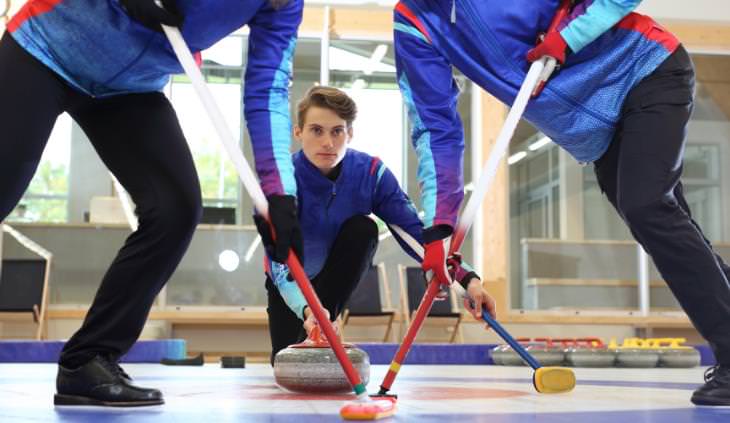
Curling is a game played on ice, in which one team member slides a large stone on ice, and then 2 players sweep the ice in front of the stone to guide the stone as it glides to the target. Their goal is to slide the 44-pound (20 kg) stone so that it stops perfectly inside the red circle, called the tee, which is inside a larger blue circle, called the house. The athletes zealously sweep the ice in front of the stone so that it starts melting, slowing the stone as it approaches the tee.
The game is called curling because the path of the stone curves, or curls, as it approaches the tee. There is one physics-related oddity that scientists have yet to figure out about the game: it curls in the wrong direction. Here's the explanation:
Did you know that this sport dates back to the 16th century in Scotland? It was first introduced as an Olympic sport in 1924. It appeared again only in 1988 and 1992 as a demonstration sport, meaning, the games were played not to win a medal but to promote the sport itself.
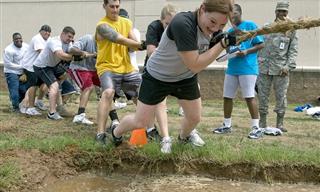
These Unbelievably Weird Games Were Once in the Olympics
In its 2000 year-long history, the Olympic Games have hosted some truly strange sporting events like pigeon shooting and distance plunging

20 Moments That Made the 2020 Olympics Unforgettable
These powerful and wholesome moments made the long-awaited 2020 Tokyo Olympics even more amazing.
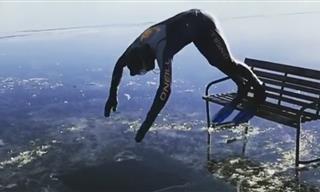 3:24
3:24
When Reality Surpasses Imagination, Winter Sports Edition
A 3-minute compilation of people's extreme winter sports abilities.
 8:53
8:53
Hilarious: What is a Bird Looking For on a Rugby Field?
In this video, we're cracking jokes about disappearing balls, strange outfits, and dancing players.
 17:51
17:51
How Challenging Was It to Plan the Tokyo Olympics?
Preparing a city for hosting the Olympic games is no easy feat at the best of times...these are the incredible logistics behind the 2021 Tokyo Olympics.
 7:07
7:07
Why the Tokyo Olympics Are History’s Most EXPENISVE Games
The pandemic is not the only reason that the Tokyo Olympics are the most expensive games in history. Why is this project so incredibly costly?

9 Great Exercises for Strong, Powerful Calves
9 simple exercises for the calf anyone can do at home

This Exercise Will Tone Your Body This Summer
Here are the benefits of the reverse plank exercise and instructions on how to perform it.

Human Beings Come Up With the Oddest Competitions...
There's no denying that human beings are competitive animals, and that can be seen in the competitions they come up with. Here are 25 rather weird ones.

The Most Breathtaking Sports Photos of the Year
Marvel at the amazing winners of the – World Sports Photography Awards 2023.

Guide: How to Stretch 14 Specific Muscles!
Want to maintain muscle flexibility, reduce pain and improve mobility? The following stretches will tell you exactly what muscle you are stretching.
 2:20
2:20
You Wouldn't Do This With Open Eyes, Let Alone Blindfolded!
Nik Wallenda is one of the world's biggest daredevils, renowned the world over for his heart-in-mouth wire walks. Watch him do what he does best - blindfolded!
 6:17
6:17
Remembering Pele, Soccer’s First Global Superstar
Football legend Pelé passed away last week. Here’s a look at his career’s greatest moments.

This Woman Turns a Children's Game into Something Great!
Be amazed by this world champion jump roper from Hungary. Who knew jump roping at reached such a level of artistic beauty?
 4:49
4:49
The Fantastic Basketball Acrobats!
This incredible act combines the game of basket ball with some amazing acrobatic prowess, as performed by the group 'Face Team' at this year's Britain's got talent. The group was an immediate success with both audiance and judges for its originality,

7 Yoga Exercises That'll Keep Thyroid Dysfunction Away
Proper nutrition can help keep the thyroid functioning properly, but if you want to see the best results, you may want to do the following exercises...
 10:01
10:01
Watch This Skier Make the Most Extraordinary Stunts
Skier Marcus fearlessly executes every daring and perilous stunt imaginable in this captivating video.
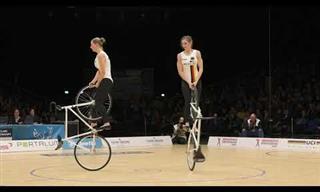 6:42
6:42
Grace and Precision: Mesmerizing Artistic Cycling Duo
Watch these two girls perform the most graceful and artistic bike stunts!
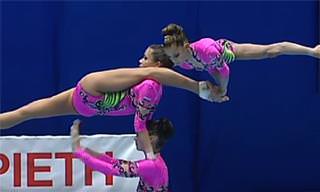 3:17
3:17
WATCH: The Most Amazing Gymnastic Trio You'll Ever See
Russia is well-known for its gymnasts, but these three girls are just incredible. Watch this breathtaking performance to be awestruck.
 7:24
7:24
These People Set World Records for Their Incredible Speed
These skilled artisans have mastered their crafts and are now the record-holders in speed at what they do.

Thinking of Taking Up Skiing This Season? Start Here
If you're thinking of taking up skiing this year, here are the basic things to know before you start.
 3:36
3:36
These Kids Are Already Little Athletes...
This children are each incredible in their own way, performing stunts you wouldn't believe they could.
 6:47
6:47
When You're Late But You're Also a Bicycle Wizard!
Sit back and enjoy a wild ride with Gabriel Wibmer
 3:05
3:05
It's a Joy to Watch What Some People Can Do!
It always surprises and amazes me what people are capable of. These incredible athletic acts are truly astounding.
 4:52
4:52
These Bicycle Stunts Have Left Me Breathless!
If you want to see exceptional talent and experience an adrenaline rush like no other, watch this mind-blowing video by bicycle rider Fabio Webmer.
 9:23
9:23
Almost a Century Later, He is Still the Master of Bowling!
This man may have lived a long time ago, but he will still amaze you with his bowling trick shots, once famous around the world!
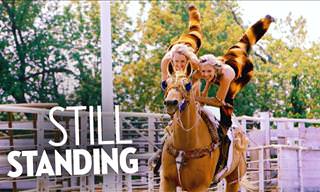 3:25
3:25
These Sisters Will Astound You with Their Horseback Skills
These two sisters from Edgerton, Alberta can perform amazing feats of athleticism on the back of a galloping horse.

6 Persistent Myths about Exercising in Your Golden Years
Many seniors give up on exercise because they keep believing in one of these 6 persistent myths, and that's a shame as being fit is timeless
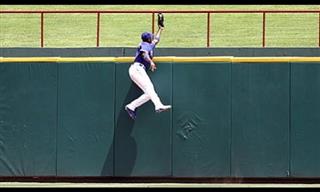 8:05
8:05
Incredible Grabs: The Greatest Catches in Baseball History
You need not be a sports fan to be in awe of these legendary baseball catches.
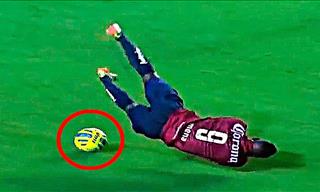 4:21
4:21
These Soccer Bloopers Show Even Athletes Have Bad Days
Watch this compilation of hilarious soccer bloopers to see the proof.
 11:57
11:57
TUTORIAL: How to Fix Your Forward Head Posture
These exercises will help you get rid of head forward posture for good!

Don’t Lose Weight, Gain Muscle: 5 Tips to Getting Strong
Diet and exercise tips to strengthening your muscles efficiently and safely.
 5:37
5:37
Get Ready for the Most Exciting Ride of Your Life!
There's no way you could watch this without gasping - this man risked his life in this incredible bike ride. Check it out!
 4:58
4:58
Warning: This Dance Routine Is Not for the Faint of Heart
V. Unbeatable is a dance troupe from India who specialize in extreme dance routines that are sure to amaze you.
 3:29
3:29
People Can Do Amazing Things With Their Bodies!
This amazing compilation brings together all the most incredible physical achievements of this year.

How Many Calories Do You Burn Without Exercising?
If you think about the amount of time you spend these 20 actions daily, you'll find out just how many calories you burn almost effortlessly.
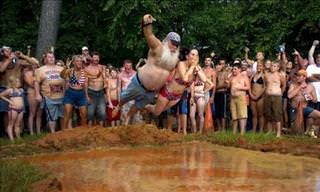
Here Are 25 of the Most Unusual Competitive Sports Ever!
There are thousands of sports that are played around the world, and here are 25 of the most unusual and hilarious sports you'll ever discover!
 1:02
1:02
The New York Mets: 2050!
An awe inspiring vision of what sports could look like in a future that is becoming closer and closer. This video by the New York Mets may be a bit fantastic, but it's that awesome kind of fantastic we just love watching!

Is a 5 Minute Exercise Helpful? A Surprising Answer
It's easy to dismiss the idea that just 5 minutes of physical activity can have any impact. Experts, however...

8 Excellent Exercises That Require Minimal Movement
Training is of paramount importance to a healthy lifestyle, and so you can easily fit exercise into your schedule. Here are 8 simple ones!

9 Easy Stretches to Reset an Aching Body
Do these 9 easy and quick stretches after a long day of sitting.
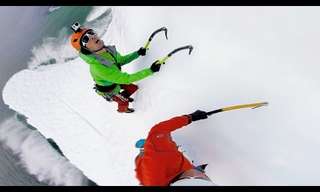 13:45
13:45
Watch These Daring Men Scale an Iceberg the Size of Greenland
Some people like to hike and climb mountains, but these crazy thrill-seekers scale icebergs. Watch the daring feat in this outrageous video.
 39:35
39:35
Practice This Yoga Flow ANYWHERE - No Equipment Needed!
Enjoy a long, restorative yoga session. Yin yoga allows you to rest in each pose rather than press and exert yourself.
 6:29
6:29
4 Beginners Exercises to Improve Your Balance in 5 Minutes
This video tutorial will help you maintain a sense of balance and strength in just 5 minutes a day
 18:48
18:48
This Unbelievable Woman's Sporting Story Will Astound You!
Jen Bricker's story is one of inspiration and past secrets coming to light.
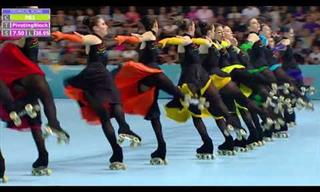 9:15
9:15
Roller Skating Done Like You've Never Seen It Before
You've heard of synchronized swimming, now prepare for the next level - synchronized roller skating!

4 Aerobic Exercises that Can Help You Shed the Fat Off
Cardio is the best way to lose weight, but out of all aerobic exercises, which is the absolute best? See for yourself below.


